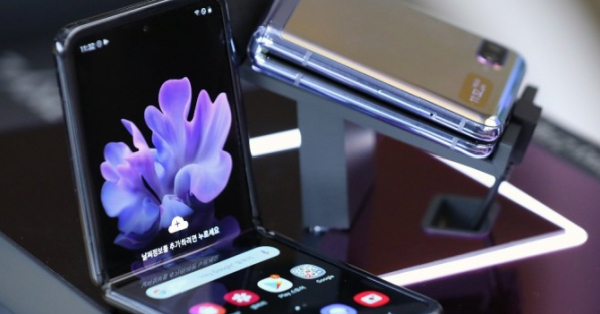A hinge problem involving Samsung Electronics’ premium foldable Galaxy Z phone series has resurfaced. Due to the nature of a foldable phone, it should fully unfold to 180 degrees, but sometimes it does not. If this problem continues to take place, a phenomenon occurs where black lines appear in the folded area in the middle of the foldable phone’s screen.
In fact, on the Samsung Electronics Members Community website, users have complained about this hinge problem on Galaxy Fold 4s, Galaxy Z Flips, and Galaxy Fold 2s. All of the complaints are the same, that the foldable Samsung phones do not fully unfold.
The main problem is that Samsung Electronics is not properly informing consumers of this issue. It has only been confirmed that consumers who visit service centers with the foldable phones in question get free repairs after confirming that the phone didn’t suffer from any external shocks.
Some observers say that the matter is far from being a problem because of the free repair services Samsung provides. However, a service center official says otherwise. “There are some people who use Samsung foldable phones for a while because there is no problem using them at first,” he said. “But if they drop or scratch their phones later, they are highly unlikely to receive free repair services at service centers.”
Some people criticize Samsung Electronics, saying that the company is passing on the unfolding problem to consumers. This is because neither the retailers nor service centers mention the possibility of a problem with the foldable phone itself; the Korean smartphone maker officially only warns that opening and closing the phone beyond the warrantied angle may cause a strain on the product.
The issue of trust has been raised with the foldable phone unfolding problem and Samsung Electronics’ insincere response to it. Samsung Electronics’ Galaxy S22 series has been plagued by the Game Optimization Service (GOS) controversy. In order to prevent excessive heat generation when running high-performance games or applications on smartphones, Samsung Electronics arbitrarily manipulates the number of frames per second and graphics processing unit (GPU) performance without consumer consent. It sparked a controversy among Galaxy S22 users, who criticized Samsung Electronics, saying that the company degraded the smartphone’s performance without telling consumers. Some U.S. consumers even filed a class action lawsuit against Samsung Electronics headquarters and Samsung Electronics America in a California federal court.
Han Jong-hee, vice chairman and head of the Device eXperience (DX) division at Samsung Electronics, apologized for the GOS controversy at a general shareholders’ meeting in 2022, saying, “We apologize to our shareholders and customers for causing them deep concerns about the GOS controversy.”
Samsung Electronics had used either its in-house AP Exynos or Qualcomm’s Snapdragon in its flagship smartphone models until the Galaxy S22, but loaded the next flagship Galaxy S23 exclusively with Qualcomm’s second-generation Snapdragon 8 chips after AP performance was pointed out as the main culprit behind the GOS controversy.
Back in 1995, Samsung Electronics burned 150,000 AnyCall mobile phones at the behest of the late Samsung Electronics Chairman Lee Kun-hee after the defect rate of the mobile phones reached 12 percent. In 2016, the flagship smartphone Galaxy Note 7 was mired in controversy after some of the models exploded just two weeks after launch, kicking off an early production halt and a massive recall.
Source: BusinessKorea






































